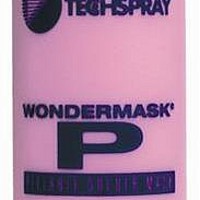2211-8SQ Techspray, 2211-8SQ Datasheet - Page 4

2211-8SQ
Manufacturer Part Number
2211-8SQ
Description
Chemicals WONDERMASK P
Manufacturer
Techspray
Type
Solder Maskr
Datasheet
1.2211-8SQ.pdf
(6 pages)
Specifications of 2211-8SQ
Product
Solder Masks
Size
8 oz
Container
Bottle
Application
Template, Hand, Pneumatic, Robotic
Chemical Component
5-Chloro-2-Methyl-4-Isothiazolin-3-One/Alkoxylated Alkyl Phenol/Alkyl Benzyl Phthalate/Deionized Water/Hydroxylated Lecithin/Magnesium Nitrate/Nonylphenol Ethoxylate
Dispensing Method
Bottle
Odor
Latex
Primary Type
Coating
Solubility
Water
Special Features
Non-Corrosive
Thickness
20 to 30 mil
Time, Cure
1 hrs Ambient, 30 (Min.) @ 65 °C, 20 (Min.) @ 82 °C
Viscosity
28000 to 30000 cps
Weight
8 Oz.
Lead Free Status / RoHS Status
Lead free / RoHS Compliant
4. FIRST AID MEASURES
5. FIRE FIGHTING MEASURES
Wondermask P
EMERGENCY OVERVIEW
POTENTIAL HEALTH EFFECTS
SIGNS AND SYMPTOMS OF OVEREXPOSURE
EYES: Immediately flush eyes with plenty of water. Get medical attention, if irritation persists.
SKIN: Wash with soap and water. Get medical attention if irritation develops or persists.
INGESTION: If swallowed, do not induce vomiting. If conscious and alert, give two glasses of water. Seek
medical attention.
INHALATION: Remove to fresh air. If not breathing, give artificial respiration. If breathing is difficult, give
oxygen. Get medical attention.
FLASHPOINT AND METHOD: None
FLAMMABLE LIMITS: N/A to N/A
EXTINGUISHING MEDIA: Water, foam, dry chemical, carbon dioxide.
HAZARDOUS COMBUSTION PRODUCTS: Smoke, fumes and oxides of carbon.
FIRE FIGHTING PROCEDURES: Use water spray to keep fire-exposed containers cool and to knock down
vapors which may result from product decomposition.
FIRE FIGHTING EQUIPMENT: As in any fire, wear self-contained breathing apparatus pressure-demand,
(MSHA/NIOSH approved or equivalent) and full protective gear.
HAZARDOUS DECOMPOSITION PRODUCTS: None Expected.
IMMEDIATE CONCERNS: Avoid exposure to vapor concentration in confined areas.
EYES: Avoid contact with eyes; may cause redness, irritation and conjunctivitis.
SKIN: May cause skin irritation.
INGESTION: Substance may be harmful if swallowed.
INHALATION: Prolonged or excessive inhalation may cause respiratory tract irritation.
EYES: Symptoms of overexposure include: stinging, tearing, redness and pain.
SKIN: Prolonged or exposure may cause skin irritation.
INGESTION: Ingestion may result in diarhea and/or nausea.
INHALATION: Inhalation may cause respiratory tract irritation.
ACUTE TOXICITY: Low hazard for usual industrial or commercial handling.





